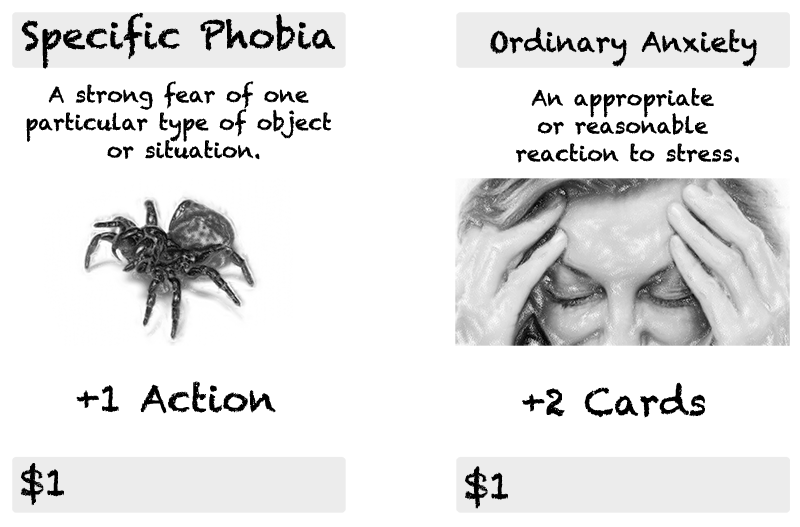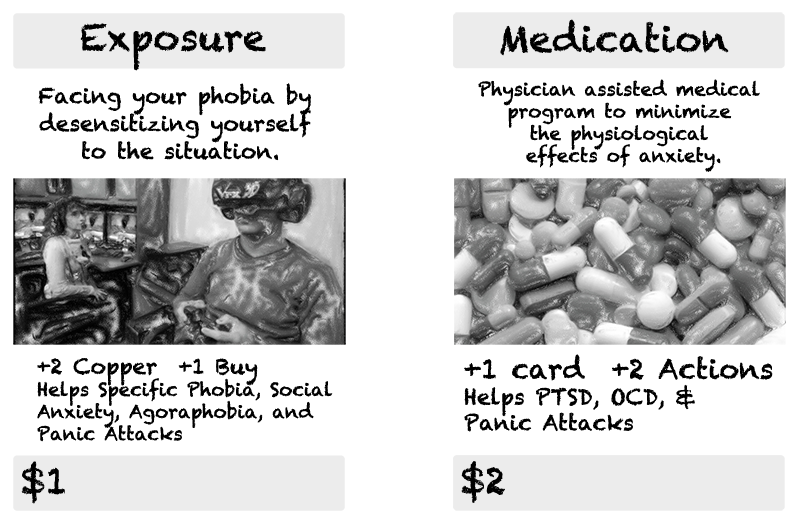Panic Attackers!
STUDENT DESIGNER: Bilal Bashir
PURPOSE: The American Psychological Association has identified anxiety as the leading mental health issue in the United States. College freshmen are particularly susceptible to anxiety but, ironically, these stressors appear during a developmental stage when students may be less physiologically prepared to mitigate the effects of stress. Incoming classmen who are less able to cope with new stressors may make poor decisions that affect their academic standing. Consequently, we developed a game to teach incoming students about the various types of anxiety and several appropriate therapies. Game-based learning affords opportunities for practice, just-in-time learning, and feedback that traditional teaching methods lack. It was predicted that game-based teaching methods would lead to improved retention compared to text-based instructional methods.
METHODS: 68 volunteers were recruited from the York College Research Subject Pool after providing informed consent. A majority of the volunteers were 18-year-old freshmen from a broad distribution of ethnicities. Subjects were randomly placed in either an experimental or control group. Subjects in the experimental group played a game with game mechanics that were designed to reinforce learning, and subjects in the control group were exposed to the game materials but not the game mechanics. Subjects received course credit for participation. All research was conducted in accordance with the CUNY Institutional Review Board. Subjects in the experimental condition played a competitive card game. Cards were used to represent 8 major types of anxiety and 12 therapies. All content was modeled from the Problem Effectiveness Chart in the Anxiety and Phobia Workbook (Bourne, J., 2010). Cards defined an anxiety or therapy, and therapy cards possessed information about which anxieties they related to. Cards also possessed icons that represented their value or cost in the game. Treasure and Sanity Cards were used as resources in the game to be spent and earned, respectively. All subjects were given a blank version of the Problem Effectiveness Chart to complete as a post-treatment assessment. Subjects in the experimental condition played the game for approximately 40 minutes. Subjects in the control condition studied the cards for 15 minutes, which was an estimate of the time experimental subjects actually spent studying the content on the cards. The rules of the game follow:
- Game Objective: "Life is full of challenges, and sometimes those challenges bring stress and anxiety! In this two-player card game, you will do battle with your opponent using Anxiety Cards and Therapy Cards. When a challenger presents you with an Anxiety Card, you must choose the proper Therapy Card to protect yourself from anxiety. If you defend yourself, you win a card. If you don't, you loose a card. The player with the most Action Cards at the end of the hour wins!"
- Round of Play: Roll the die to see who goes first. Each turn has an Action Phase, a Buy Phase, and a Clean-Up Phase. Just remember A-B-C!
- Action Phase: Draw 5 cards from your deck. If you run out of cards, flip your discard pile to form a new deck. Players can play one Anxiety Card or Therapy Card. When a player lays down an Anxiety Card, the opposing player must defend against the attack by laying down an appropriate Therapy Card. If you successfully defend, place both cards face up onto your discard pile. If you do not defend, forfeit one card from your hand to the attacker's discard pile.
- Buy Phase: Players can buy 1 Attack or Therapy card from the piles using the Treasure Cards in their hand. Purchased cards are placed face up on the player's discard pile.
- Clean-Up Phase: All cards in your hand and play area go face up into a discard pile.
- Ending the Game: The game ends at the end of the hour. The one with the most Action Cards wins!
REFERENCES: Bourne, E.J. (2010). The Anxiety and Phobia Workbook (5th Ed). Oakland, CA: New Harbinger Publications, Inc.


STUDENT DESIGNER: Bilal Bashir
PURPOSE: The American Psychological Association has identified anxiety as the leading mental health issue in the United States. College freshmen are particularly susceptible to anxiety but, ironically, these stressors appear during a developmental stage when students may be less physiologically prepared to mitigate the effects of stress. Incoming classmen who are less able to cope with new stressors may make poor decisions that affect their academic standing. Consequently, we developed a game to teach incoming students about the various types of anxiety and several appropriate therapies. Game-based learning affords opportunities for practice, just-in-time learning, and feedback that traditional teaching methods lack. It was predicted that game-based teaching methods would lead to improved retention compared to text-based instructional methods.
METHODS: 68 volunteers were recruited from the York College Research Subject Pool after providing informed consent. A majority of the volunteers were 18-year-old freshmen from a broad distribution of ethnicities. Subjects were randomly placed in either an experimental or control group. Subjects in the experimental group played a game with game mechanics that were designed to reinforce learning, and subjects in the control group were exposed to the game materials but not the game mechanics. Subjects received course credit for participation. All research was conducted in accordance with the CUNY Institutional Review Board. Subjects in the experimental condition played a competitive card game. Cards were used to represent 8 major types of anxiety and 12 therapies. All content was modeled from the Problem Effectiveness Chart in the Anxiety and Phobia Workbook (Bourne, J., 2010). Cards defined an anxiety or therapy, and therapy cards possessed information about which anxieties they related to. Cards also possessed icons that represented their value or cost in the game. Treasure and Sanity Cards were used as resources in the game to be spent and earned, respectively. All subjects were given a blank version of the Problem Effectiveness Chart to complete as a post-treatment assessment. Subjects in the experimental condition played the game for approximately 40 minutes. Subjects in the control condition studied the cards for 15 minutes, which was an estimate of the time experimental subjects actually spent studying the content on the cards. The rules of the game follow:
- Game Objective: "Life is full of challenges, and sometimes those challenges bring stress and anxiety! In this two-player card game, you will do battle with your opponent using Anxiety Cards and Therapy Cards. When a challenger presents you with an Anxiety Card, you must choose the proper Therapy Card to protect yourself from anxiety. If you defend yourself, you win a card. If you don't, you loose a card. The player with the most Action Cards at the end of the hour wins!"
- Round of Play: Roll the die to see who goes first. Each turn has an Action Phase, a Buy Phase, and a Clean-Up Phase. Just remember A-B-C!
- Action Phase: Draw 5 cards from your deck. If you run out of cards, flip your discard pile to form a new deck. Players can play one Anxiety Card or Therapy Card. When a player lays down an Anxiety Card, the opposing player must defend against the attack by laying down an appropriate Therapy Card. If you successfully defend, place both cards face up onto your discard pile. If you do not defend, forfeit one card from your hand to the attacker's discard pile.
- Buy Phase: Players can buy 1 Attack or Therapy card from the piles using the Treasure Cards in their hand. Purchased cards are placed face up on the player's discard pile.
- Clean-Up Phase: All cards in your hand and play area go face up into a discard pile.
- Ending the Game: The game ends at the end of the hour. The one with the most Action Cards wins!
REFERENCES: Bourne, E.J. (2010). The Anxiety and Phobia Workbook (5th Ed). Oakland, CA: New Harbinger Publications, Inc.


